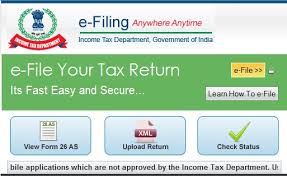
The Goods and Services Tax (GST) collections for December 2017 show an increase, but despite this there are concerns that the tepid collections since July could pose a problem on the fiscal deficit front.
However, a closer look at the numbers shows that these fears are misplaced. The Centre’s tax collection, as per the CGA (Controller General of Accounts), appears to be on track to achieving the Budget estimates for 2017-18. There are, however, many trouble spots in the new regime.
The complexity of the GST, which combines many of the indirect taxes of the Centre and States, has made it quite difficult to estimate the expected monthly collection target.
At a press conference in August 2017, Finance Minister Arun Jaitley said that the collections in July were better than the target of ₹91,000 crore for that month. This figure has been used since then as a ball-park figure for measuring monthly GST collections.
If we use this figure, GST collections in October (₹83,346 crore), November (₹80,808 crore) and December (₹86,703 crore) are well short of the target. But that may not really be the case.
To estimate the targeted monthly GST collection, we worked backward to see the projected revenue in the Budget estimate for 2017-18 from goods and services that have been put under GST. While service taxes have mostly moved under GST, only about a third of excise duty collections are under GST since the taxes on many petroleum products are still outside the new regime. Under Customs duty, almost 64 per cent of the collections are now under GST.
Using this basis, around ₹43,000 crore of GST need to be collected by the Centre monthly towards its indirect tax collections. A portion of this will devolve to the States as part of their share in the Centre’s revenue.
States totally have to be disbursed ₹43,000 crore every month, assuming 14 per cent annual growth from their 2015-16 revenue. Working with these numbers, a monthly GST collection of around ₹80,000 crore appears sufficient to meet the Centre’s and States’ needs.
Actual numbers
The fact that the Centre has not fallen short in its indirect tax collections is borne out by the numbers from the CGA. Gross tax revenue of the Centre for the period between April to November 2017 was ₹10,87,302 crore, up 16.5 per cent from the amount collected in the same period in 2016-17.
Interestingly, gross indirect tax collection of the Centre in this period was up 18.2 per cent, having risen from ₹5,08,924 crore to ₹6,01,904 crore.
While the devolution to States was 25 per cent higher, the Centre’s net tax revenue has managed to increase 12.59 per cent, showing that the Finance Minister will not have too much difficulty in balancing the fisc.
The catch
While the Centre’s collections are on track, allocations to States can pose a problem. “Due to the fact that IGST revenue is disbursed over a period of time, there is a thinking amongst States that there is a revenue shortfall,” explains Gautam Khattar, Partner, Indirect tax, PwC.
Disputes on input-tax credit claimed by businesses in the provisional GSTR 3B form are another issue that could impede calculations. “Definitely, this is the major concern for the Department because invoice matching is the backbone of GST,” says Vishal Raheja, DGM, Taxmann.
Source: Press Reader





